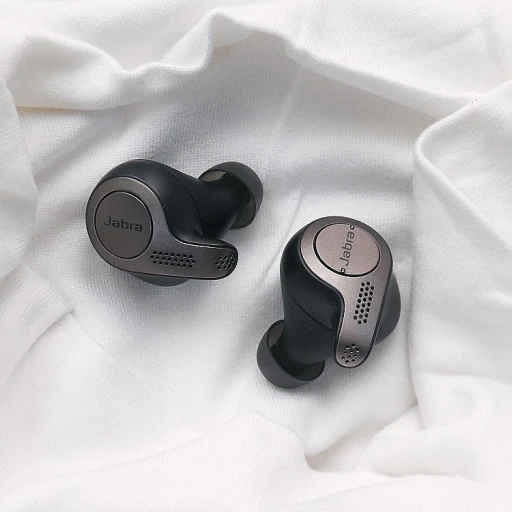The Intersection of Luxury and Sustainability
Where Luxury Meets Eco-Friendliness: The New Standard
The union of luxury and sustainability has never been more apparent than in the advent of solar technologies in high-end products. As a growing trend amongst luxury brands, integrating renewable energy sources, such as solar power, is no longer just about being eco-friendly—it's about redefining opulence. The demand for sustainable and elegant solar-powered designs is rapidly altering the landscape of luxury tech.
Luxury brands have taken interest in the seamless integration of solar panels into their designs, blending functionality with aesthetic appeal. The thin film technology and advancements in materials like silicon and perovskite offer an efficient and cost-effective solution without compromising design elegance. These materials improve the efficiency of photovoltaic cells, converting light into electricity more effectively.
One fresh innovation in this realm includes bifacial solar panels, which capture light on both sides, significantly increasing energy output and efficiency. Floating solar systems are another technological breakthrough, allowing larger solar farms to be placed over bodies of water, optimizing space, and enhancing energy yield.
Moreover, solar cell advancements have led to aesthetically appealing solutions such as solar paint and solar-powered art installations, which not only provide solar energy but also serve as statements of luxury.
Innovative Designs in Solar Technology
Revolutionizing Solar with Sophisticated Designs
The evolution of solar technology has ushered in a new era characterized by innovative designs that cater to both functionality and aesthetics. The shift towards luxury in solar technology largely revolves around the quest for efficiency and elegance, making “luxury tech” a significant driving force behind solar innovation.
Modern solar panels and cells are now being developed with cutting-edge materials such as perovskite and thin-film technologies. These advancements offer higher efficiency and improved energy storage capabilities, revolutionizing the way solar energy is harvested and stored. The advent of floating and bifacial solar systems further exemplifies the diversification within panel technology, providing solutions that are not only efficient but also space-saving and visually appealing.
In an age where renewable energy is gaining paramount importance, incorporating technology like floating solar farms and bifacial panels not only boosts electricity production but reduces the aesthetic impact on luxury properties. Improved designs have allowed the integration of solar systems that seamlessly blend with the aesthetic of high-end architectural projects, removing the traditional view of solar panels as cumbersome and out of place.
Moreover, the use of solar paint and other innovations allows for further exploration of how solar panels can be incorporated into the very fabric of buildings and luxury vehicles. This clever integration builds a newfound appreciation among consumers who desire efficiency without compromising on design.
The focus on eco-friendly yet luxurious designs underscores the steady adoption and adaptation of solar technologies by luxury brands.
Luxury Brands Leading the Solar Charge
Leading the Charge in Style and Innovation
Luxury brands are not just about opulence, but also pioneering the path toward a sustainable future. As the world tilts towards eco-friendly alternatives, these brands have embraced solar technology as a hallmark of sophistication and responsibility. This willingness to innovate is reflected in their approach to design and the adoption of cutting-edge solar solutions. Prestigious car manufacturers, for instance, have incorporated high-efficiency solar panels into their vehicles, seamlessly blending elegance with sustainability. These solar panels are meticulously designed to complement the aesthetic allure while harnessing solar energy to power components and reduce reliance on traditional fuels. It's a remarkable example of engineering where luxury meets green technology. Luxury real estate is another arena where solar technology has made significant strides. Upscale properties are now equipped with sleek solar panels, either integrated into rooftops or as part of the landscape design. These panels are produced using advanced materials that provide high conversion efficiency while maintaining a thin, unobtrusive profile. Some properties even showcase innovations like bifacial solar panels and floating solar systems, pushing the boundaries of solar energy application in luxury settings. Collaborations with tech giants have also propelled solar tech into the spotlight. Many high-end designers and technologists work together to produce customized solar cells that maximize energy output while ensuring that luxury products maintain their signature look. These tailored innovations ensure that solar power is not only efficient but also enhances the extravagance that consumers expect. In the realm of wearables and personal gadgets, solar-powered technology is becoming a staple. From watches to smartphones, embedding solar cells into these devices ensures a constant supply of clean energy without compromising on design. The incorporation of perovskite solar and thin-film technologies showcases a commitment to reducing environmental impact while offering the latest in tech luxury. To explore further developments and sophisticated applications of solar technology, you can read more about harnessing ultraviolet light for optimal plant growth. This convergence of luxury and eco-consciousness highlights how the future of solar technology is not just about energy efficiency but about making solar-powered elegance the new norm.Challenges in Integrating Solar Technology
Overcoming the Barriers of Solar Tech Integration
Integrating solar technology into luxury tech gadgets presents several challenges that manufacturers need to address. One of the primary hurdles is achieving optimal efficiency in converting sunlight into usable energy. Photovoltaic cells, the backbone of solar panels, require continuous innovations to increase their efficiency while keeping costs manageable. With advancements in materials like perovskite and thin-film technologies, there is potential for significant progress.
However, luxury tech gadgets face unique challenges. The integration of solar cells must complement the design aesthetics without compromising performance. Silicon technology, although effective, might not always blend seamlessly with sleek designs. Instead, manufacturers are exploring more flexible materials such as thin-film solar cells that allow for greater versatility in form and function.
Another barrier is the fluctuating efficiency and energy production in different environments. Bifacial solar and floating solar options present promising solutions, particularly for gadgets meant for luxury travel or settings that offer consistent exposure to sunlight. Despite these innovations, energy storage systems also play a crucial role in ensuring the reliability of solar-powered gadgets.
Cost remains a persistent factor to contend with. As the technology becomes more advanced, balancing the production costs with the perennial pressure of maintaining luxury standards can be challenging. Ensuring that solar panels and systems are not only efficient but also durable and aesthetically pleasing demands significant investment in research and development.
Ultimately, as these technologies continue to evolve, they hold great promise for integrating solar energy in luxury markets, driving forward the pursuit of clean energy solutions while enhancing the opulence of tech gadgets.






